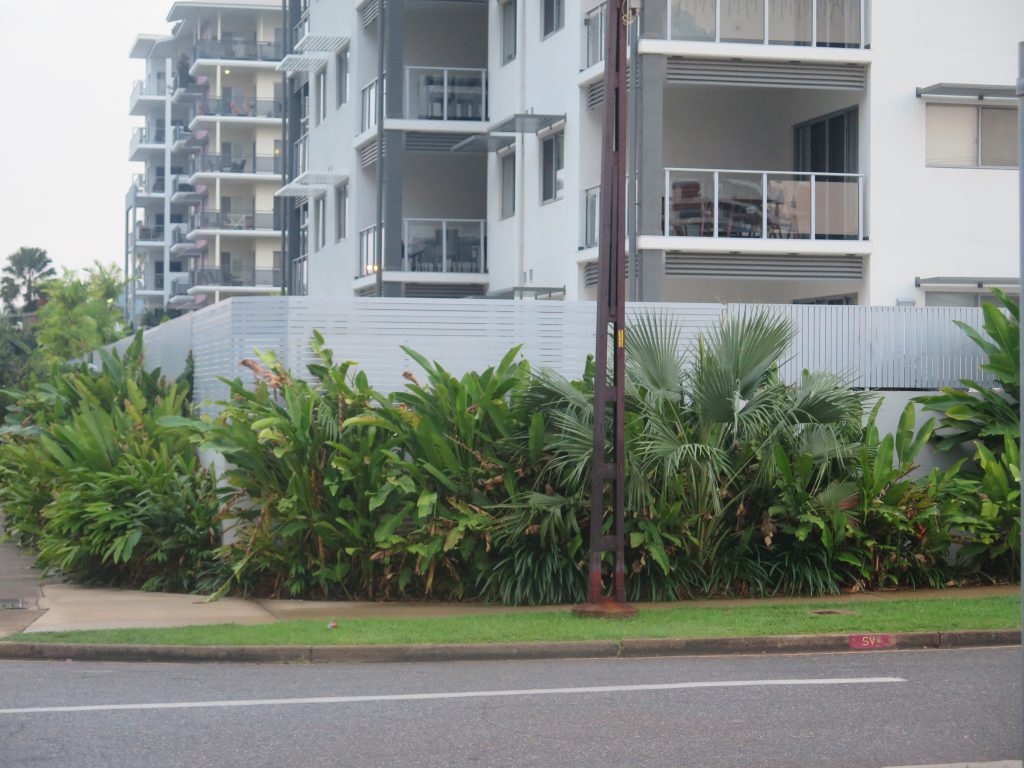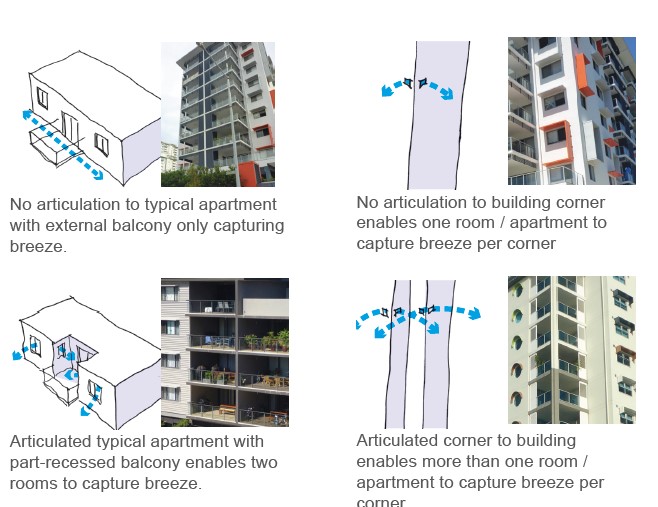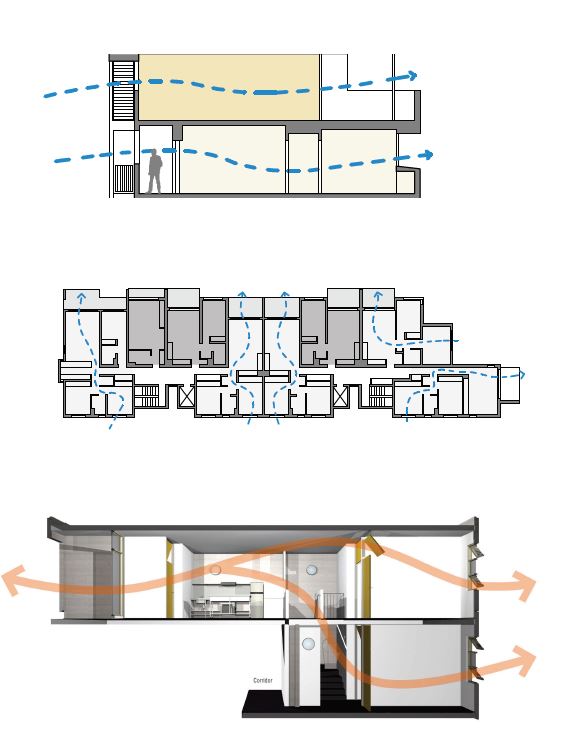Moving air
IS cool air
Designing buildings to capture the breeze
Building design that encourages the movement of air can help to improve thermal comfort by enabling two types of cooling:
- Evaporative cooling of the skin from air movement, which is less effective during periods of high humidity
- Convection cooling where air movement can help vent heat that builds up in walls and other surfaces
Apartments can be designed to facilitate natural cross-ventilation through meaningful building articulation. Passive cooling through air movement can be enabled by building design that includes orientating to capture the prevailing cooling breezes. The predominant cooling breezes in Darwin are from the north-west in the wet season and the south-east in the dry season. Roof vents and dis-connected but overlapping awnings can help hot air escape enclosed areas.
Passive cooling might assist thermal comfort and reduce energy demand for air conditioning. However, refrigerated air-conditioning is often required in Darwin for at least part of the year when humidity is highest during the build-up and wet season.
Passive cooling potential of cross-ventilation is influenced by the local micro-climate. Therefore, planting of trees around buildings that are designed for shading while maintaining airflow from cooling breezes can maximize the benefits of cross-ventilation in cooling buildings1.

Opportunities in Darwin
Building articulation
Building articulation is when the external walls of a building are set forward or back from the predominant building line to create protrusions and recesses that effectively increase the surface area of the building facade. This can be a useful way to increase the level of access to daylight for individual rooms and apartments more generally.
When the recession distances are significant (i.e. greater than 1m) then this can be particularly useful in wet-dry tropical design because it enables a higher proportion of rooms to have the potential for windows on at least two different orientations, thereby enabling cross-ventilation.
This principle applies both at the individual apartment and building scale and the intent behind ‘building articulation’ controls can have direct lifestyle impacts if applied appropriately. Articulated corners and sides of buildings also enable amenity views to be maximized across multiple apartments.

Cross ventilation
Cross ventilation is when air can naturally pass through an apartment to enable cooling breezes to be felt within the apartment, the air to be refreshed and hopefully for the need to use mechanical air-conditioning reduced. To achieve this cross-ventilated effect, apartments will need more than one aspect i.e. openings in external walls that face different directions. Ideally apartments would also be oriented to capture prevailing breezes, but this is not always possible.
Apartment layout and building depth are important factors in the ability of an apartment to be naturally ventilated. Generally, as the building gets deeper or the internal layout more complex, then effective airflow reduces.
Corner and end-of corridor apartments are well positioned for achieving good cross-ventilation. Apartment buildings with open corridors can help single aspect apartments achieve cross-ventilation, but this approach does not scale up well with the increased taller buildings found in the CBD.
When facades are meaningfully and significantly articulated it can be possible for single aspect, double loaded corridor apartments can achieve a degree of cross-ventilation through rooms by creating a secondary aspect for them.

Key points
- Building design that increases exposure to cooling breezes and encourages air movement can help improve thermal comfort and reduce energy demand for cooling
- Evaporative cooling is likely to be less effective in maintaining thermal comfort when then the humidity is high
- The surrounding micro-climate and urban geometry influences the potential cooling benefits of cross-ventilation
MORE INFORMATION
References
- Mochida, A., Yoshino, H., Miyauchi, S., & Mitamura, T. (2006). Total analysis of cooling effects of cross-ventilation affected by microclimate around a building. Solar energy, 80(4), 371-382. doi:https://doi.org/10.1016/j.solener.2005.08.014
ACKNOWLEDGEMENT
Your Tropical City acknowledge the Larrakia people as the Traditional Owners of the Darwin region and pay our respects to Larrakia elders past and present. We are committed to a positive future for the Aboriginal community.
564 Vanderlin Drive,
Berrimah NT 0828
(08) 8944 8436
hello@yourtropicalcity.com.au
PARTNER
ACKNOWLEDGEMENT
Your Tropical City acknowledge the Larrakia people as the Traditional Owners of the Darwin region and pay our respects to Larrakia elders past and present. We are committed to a positive future for the Aboriginal community.
CONTACT
564 Vanderlin Drive,
Berrimah NT 0828
(08) 8944 8436
hello@yourtropicalcity.com.au
PARTNER